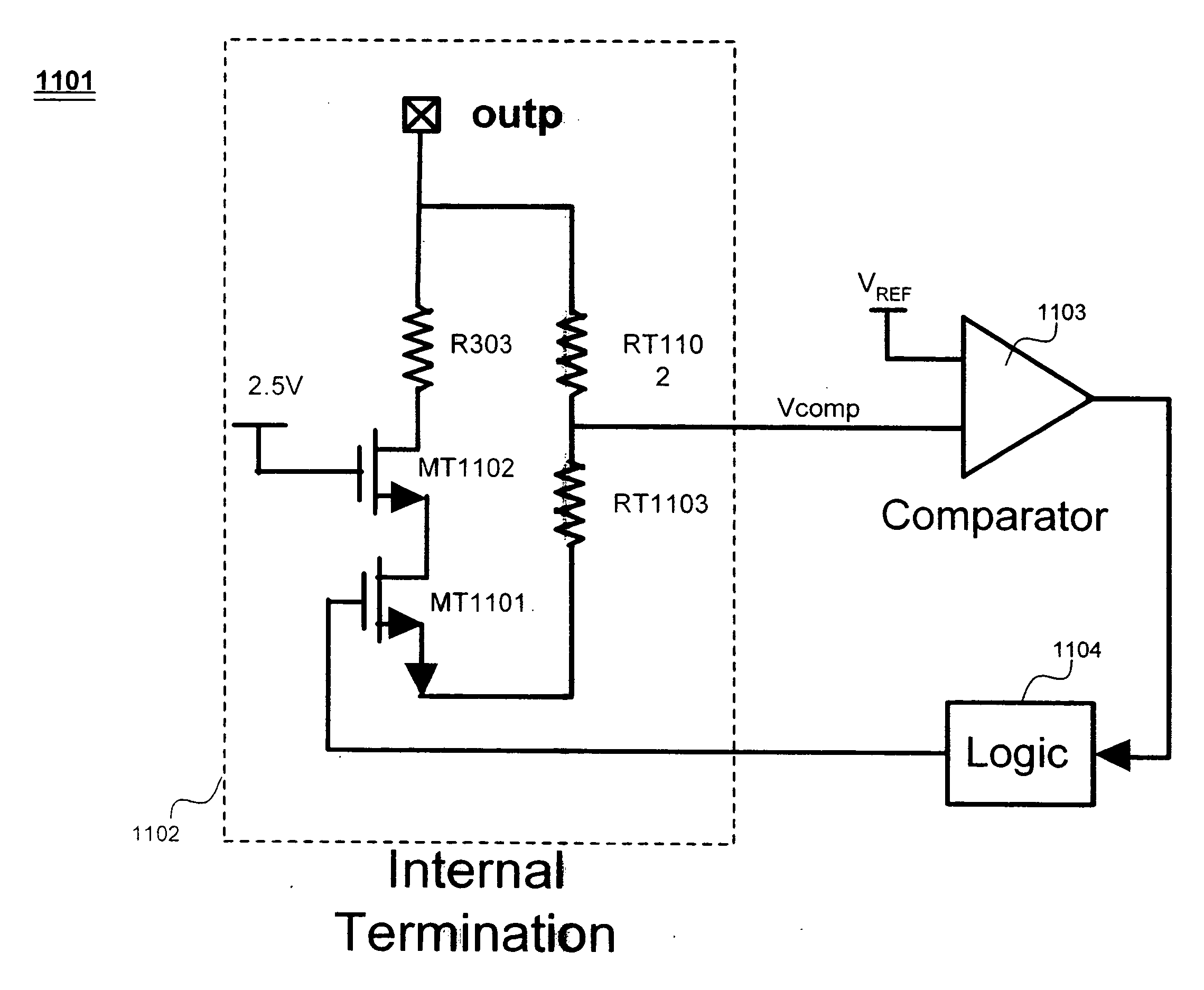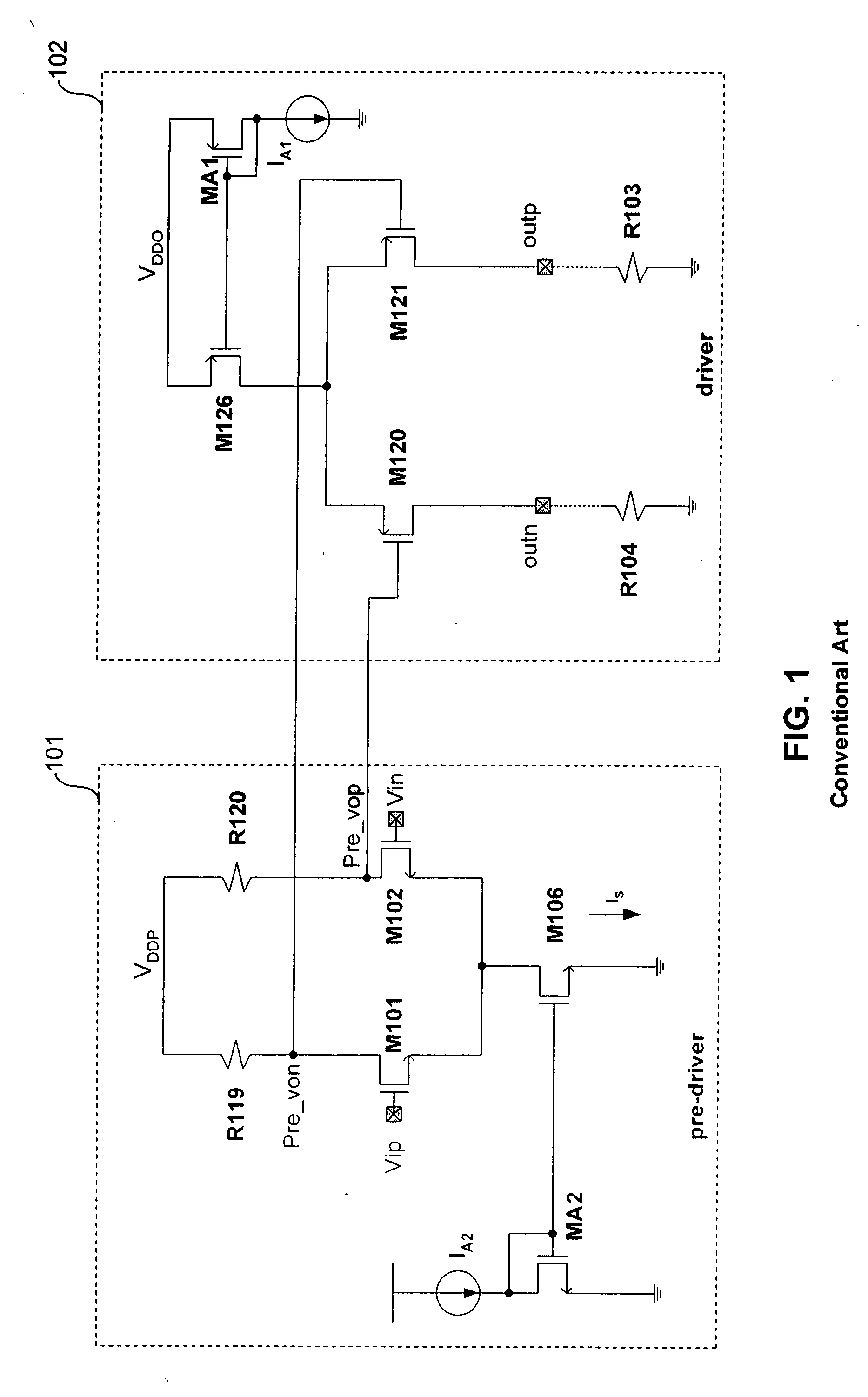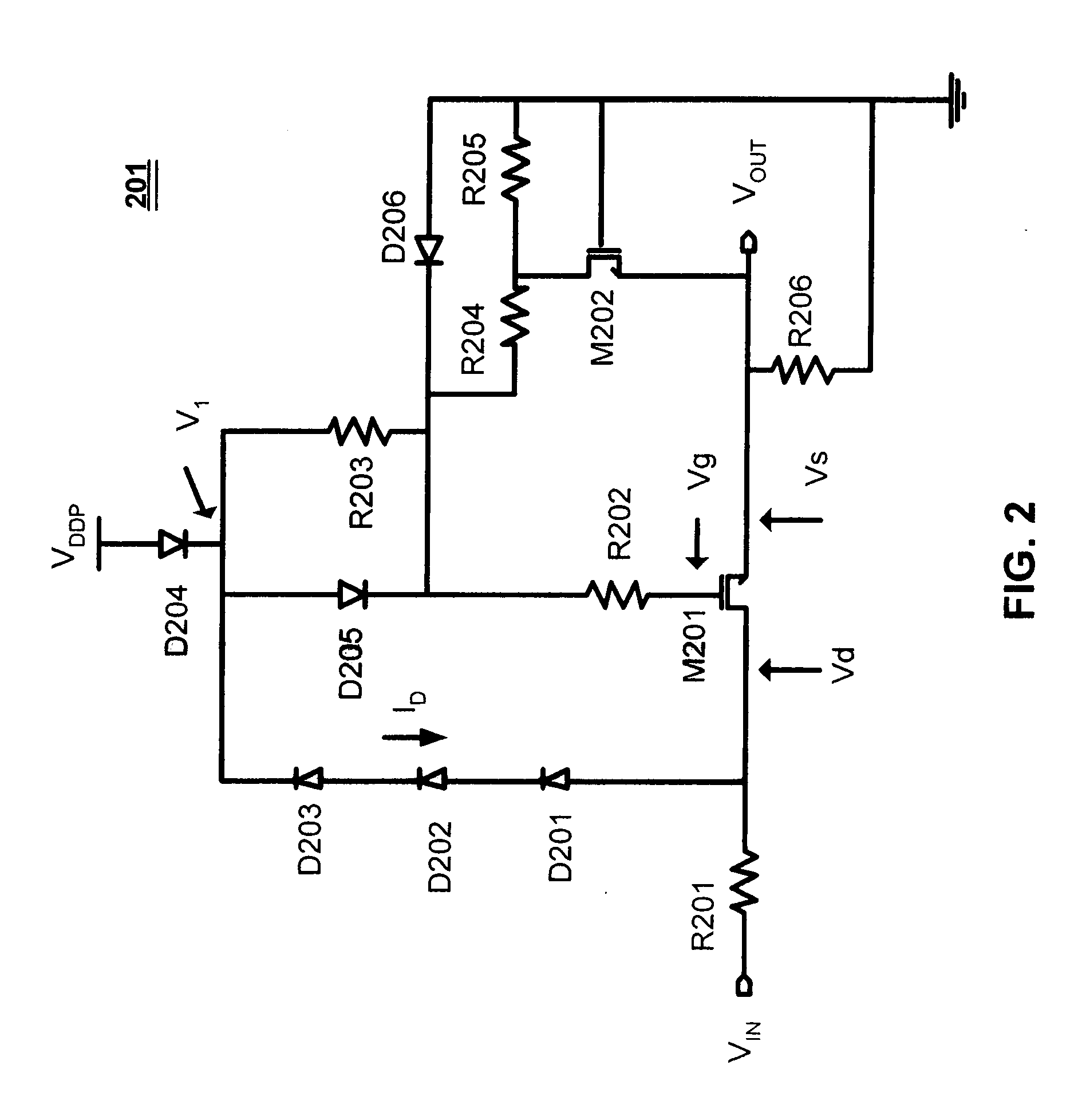Apparatus and method for over-voltage, under-voltage and over-current stress protection for transceiver input and output circuitry
a technology of transistors and circuits, applied in the field of transistor protection, can solve the problems of internal chip transistors and external circuitry that operate at higher voltages, subject to various failure mechanisms, and the insulating properties of silicon dioxide in the cmos gate wear ou
- Summary
- Abstract
- Description
- Claims
- Application Information
AI Technical Summary
Benefits of technology
Problems solved by technology
Method used
Image
Examples
Embodiment Construction
[0035] Reference will now be made in detail to the embodiments of the present invention, examples of which are illustrated in the accompanying drawings.
[0036] An “over-voltage stress condition” refers to a 5.25V power bus voltage being shorted to receiver input or transmitter output. An “under-voltage stress condition” refers to a −1V voltage in series with a 39 ohm resistor shorted to the receiver input or transmitter output.
[0037] The following description of a receive input protection circuit 201 of FIG. 2 uses the following:
VDDP=2.5V, VDDO=3.3V, VDDC=1.2V.
[0038] Diode turn-on voltage-0.6˜0.8V, VDIO=0.6˜0.8V.
Vbusp=5.25V, Vbusn=−1V
[0039] Referring to FIG. 2, one embodiment of the proposed receive input protection circuit 201 includes the following:
[0040] An input transistor M201 in series with a resistor R201 is connected to an input pad Vin. The input transistor M201 acts as a transmission gate in normal operation, and as a voltage limiter during over-voltage and under-voltage...
PUM
 Login to View More
Login to View More Abstract
Description
Claims
Application Information
 Login to View More
Login to View More - R&D Engineer
- R&D Manager
- IP Professional
- Industry Leading Data Capabilities
- Powerful AI technology
- Patent DNA Extraction
Browse by: Latest US Patents, China's latest patents, Technical Efficacy Thesaurus, Application Domain, Technology Topic, Popular Technical Reports.
© 2024 PatSnap. All rights reserved.Legal|Privacy policy|Modern Slavery Act Transparency Statement|Sitemap|About US| Contact US: help@patsnap.com










